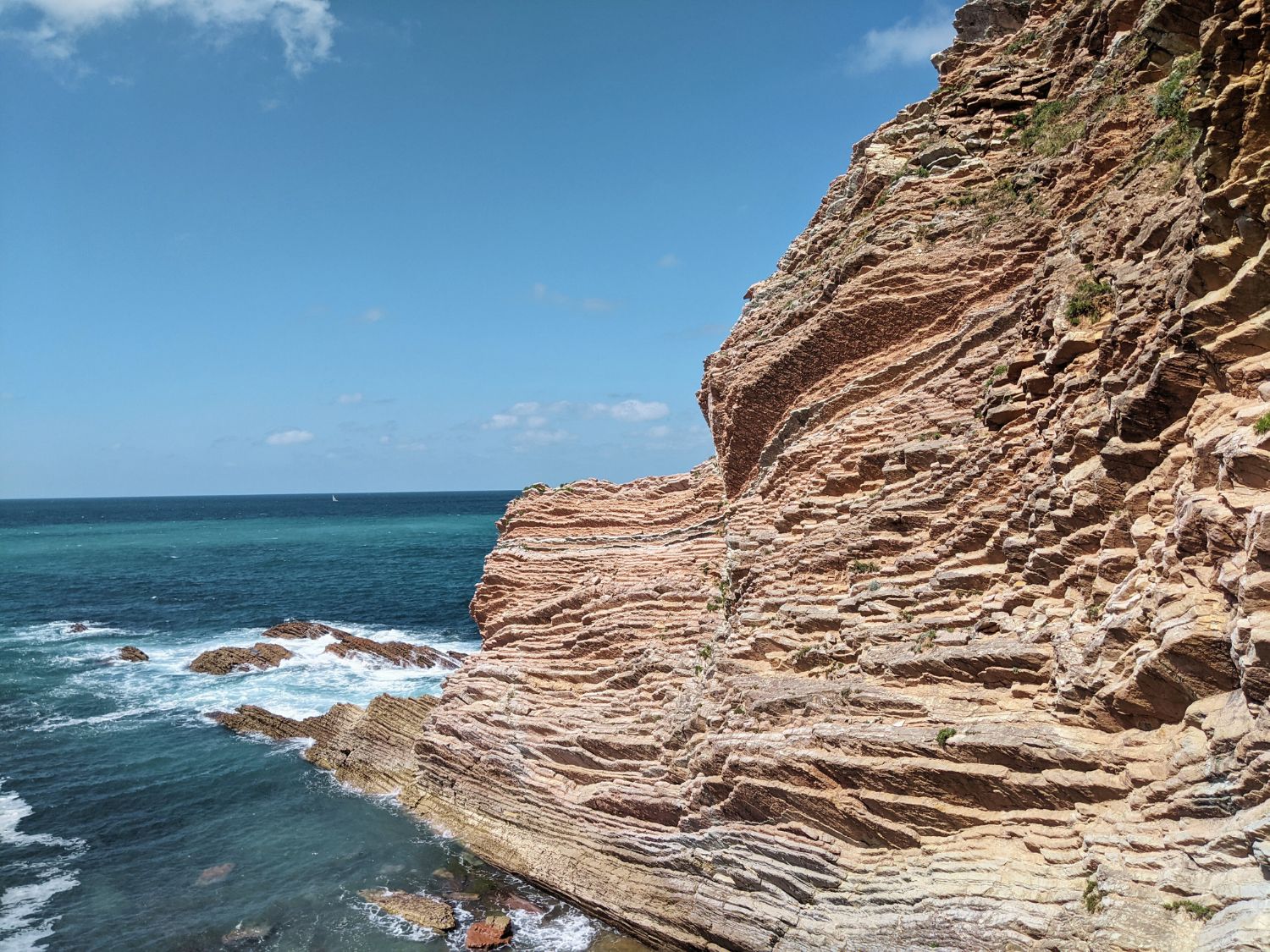The Zumaia Flysch, located in the Basque Country of Northern Spain, is a spectacular geological formation renowned for its stunning cliff faces and stratified rock layers.
Not only is it simply stunning to look at, this natural marvel is a key site for geological research, offering insights into millions of years of Earth’s history.
The area’s unique geological characteristics make it an invaluable resource for understanding the processes that have shaped our planet.
A visit to the Zumaia Flysch is one of the top things to do on a trip to Zumaia. In the article below, we’ll run through what makes this place so special and how to get the most out of your trip!
Things to know about the Zumaia Flysch
Before we walk you through the best ways to visit the flysch, it’s worth understanding a little bit more about it.
1. Formation and Geological History
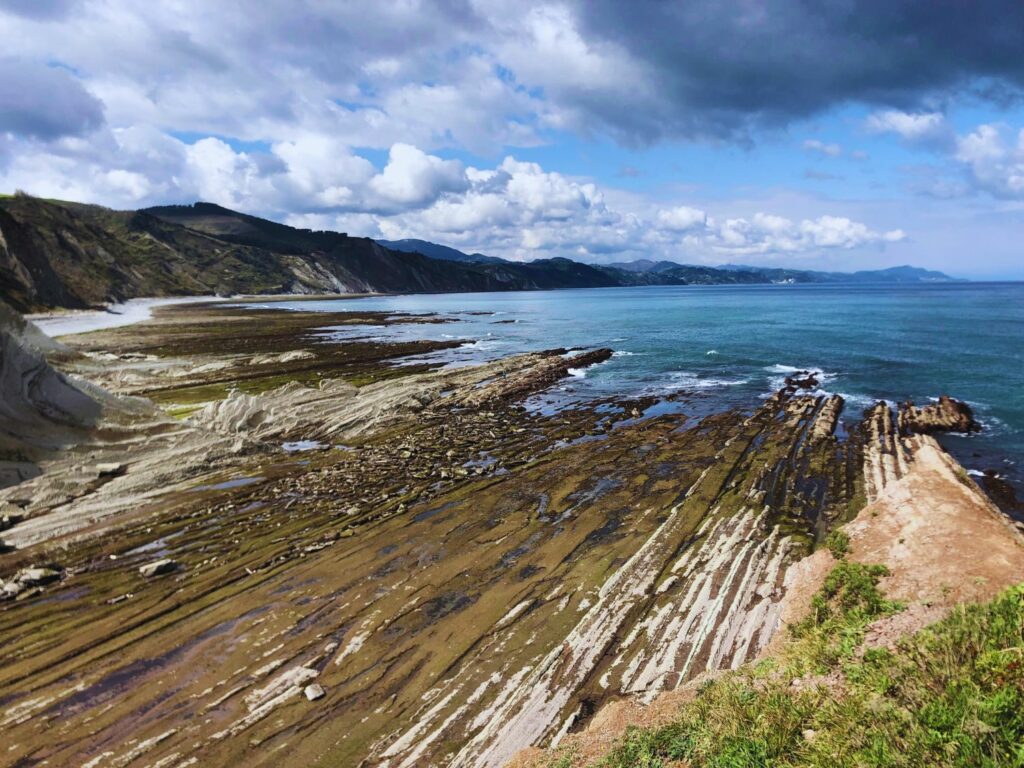
The Zumaia Flysch is characterised by its alternating hard and soft rock layers, formed over millions of years. These layers, or “flysch”, are a result of sediment accumulation in deep marine environments, followed by compression and uplift.
The visible strata (or lines of rock) provide a chronological record of geological events. Unbelievably this covers everything from ancient climate changes to mass extinctions!
You can learn more about flysch formation here.
2. Significance in Earth’s History
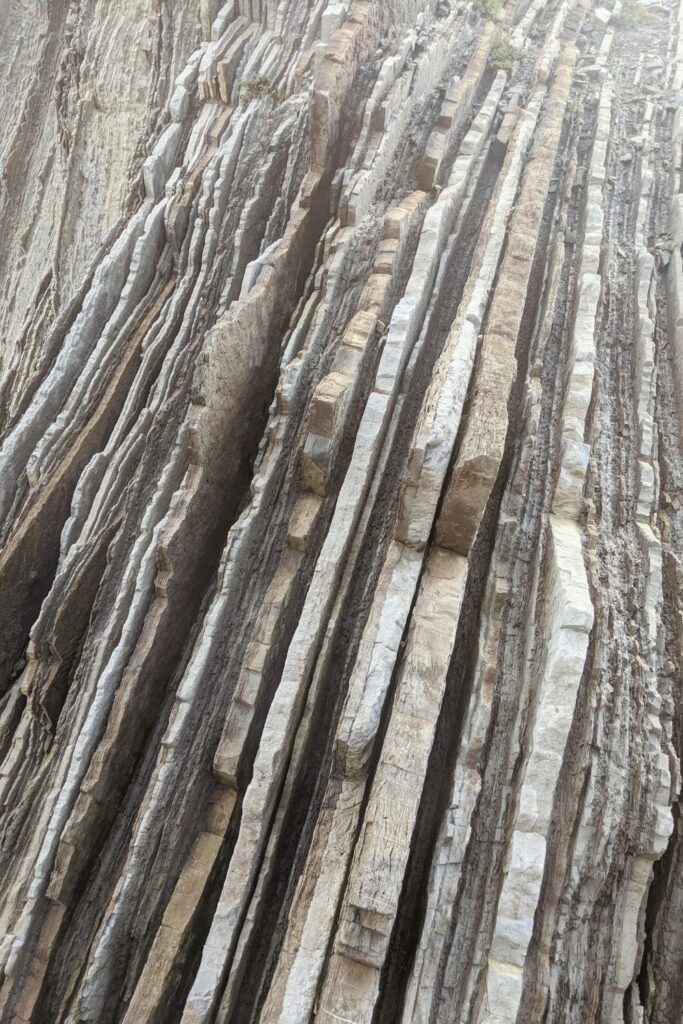
The Zumaia Flysch is not just a geological spectacle but a window into Earth’s past. It played a crucial role in the field of stratigraphy, helping scientists decode Earth’s geological history.
The unique features of Zumaia Flysch, such as its continuous and well-preserved rock layers, make it an exceptional site for studying past geological and environmental changes
Notably, it has provided critical evidence about the Cretaceous-Paleogene boundary and mass extinction events.
Ongoing research projects continue to uncover new insights into Earth’s past. Every year the site attracted not just thousands of tourists, but international scholars from all over the world.
3. The site has been used in the hit HBO series Game of Thrones
It’s fair to say that (much like San Juan de Gaztelugatxe) the popularity of the Zumaia Flysch exploded following its inclusion in the site in the HBO hit series Game of Thrones.
Itzurun Beach and San Juan de Gaztelugatxe combine in the series to form Drangonstone, the ancestral home of Daenerys Targaryen.
It’s not hard to see why the directors chose this spot. They combine to create an unworldly island with flying dragons. The scene below is probably the most epic!
Visiting the Flysch
Now you know a little bit more about the flysch, you’re probably dying to go and visit.
You can easily complete a self-guided visit to the flysch. Alongside the information below, there are plenty of signs at points of interest which explain more about the rock formations.
It’s also worth paying a visit to the Algorri Interpretation Centre. Here you can find additional information to get a better understanding of this natural marvel.
Playa de Itzurun
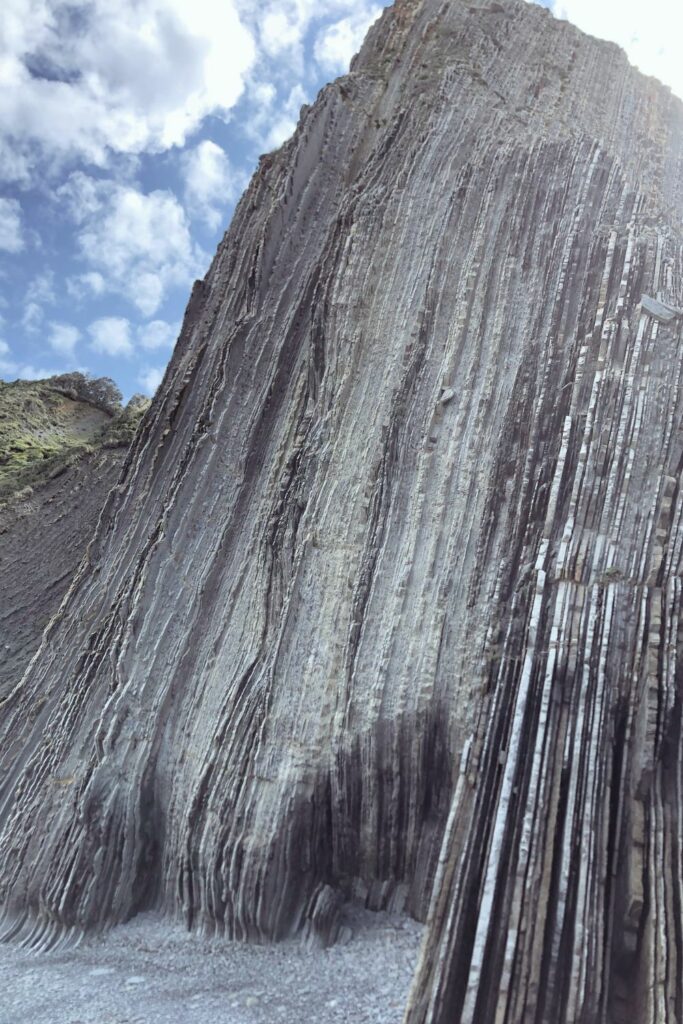
One of the best places to explore the flysch formations is from the central beach, Playa de Itzurun which is just a short walk from the centre of Zumaia.
It’s worth visiting during low tide so you can really take in all of the natural beauty. You can get really up and close to the rock formations.
Check the views from Ermita de San Telmo
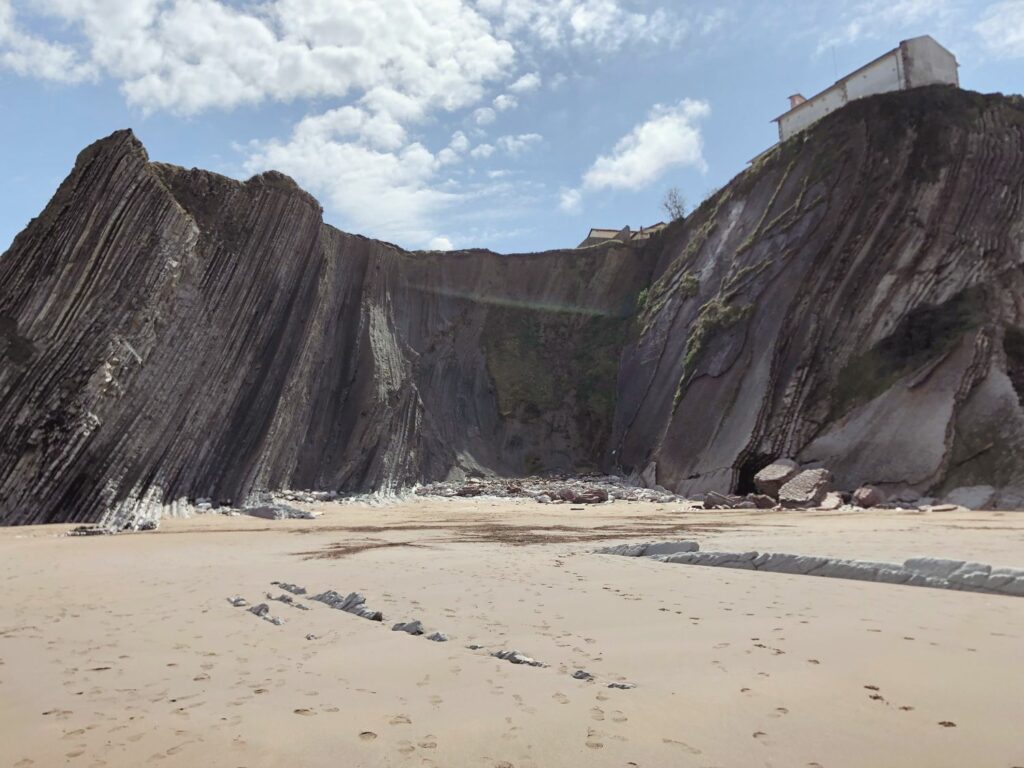
Sitting on the cliff overlooking Playa de Itzurun, you’ll notice the hermitage dedicated to San Telmo, the sailor’s saint, dating back to 1540.
The location of Ermita de San Telmo, is a great reference point as it rewards you with incredible views of the UNESCO Geopark landscape!
This spot has become even more famous after the wedding scene in the Spanish hit film “Ocho Apellidos Vascos” was filmed here!
Algori
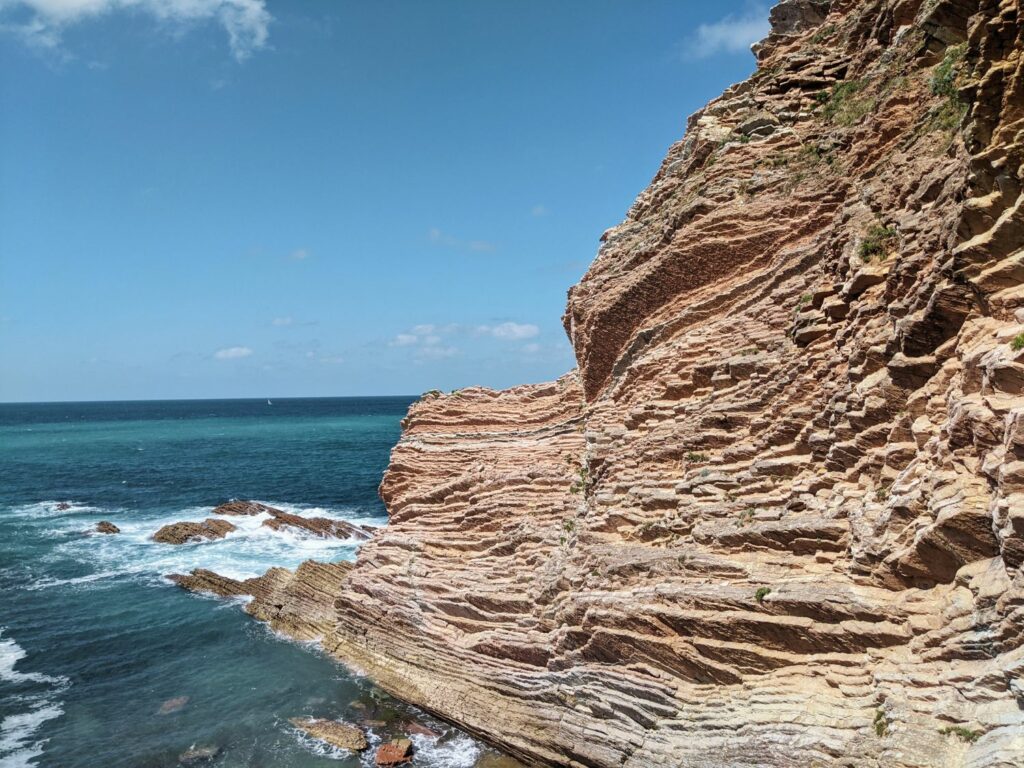
Whilst the first two spots are stunning, the view from Algori is perhaps my favourite place to enjoy the flysch. There’s something about the darker red rock that looks even more impressive.
Again, it’s worth visiting during low tide so you can Walk down to the beach and get a real up close look.
Hike
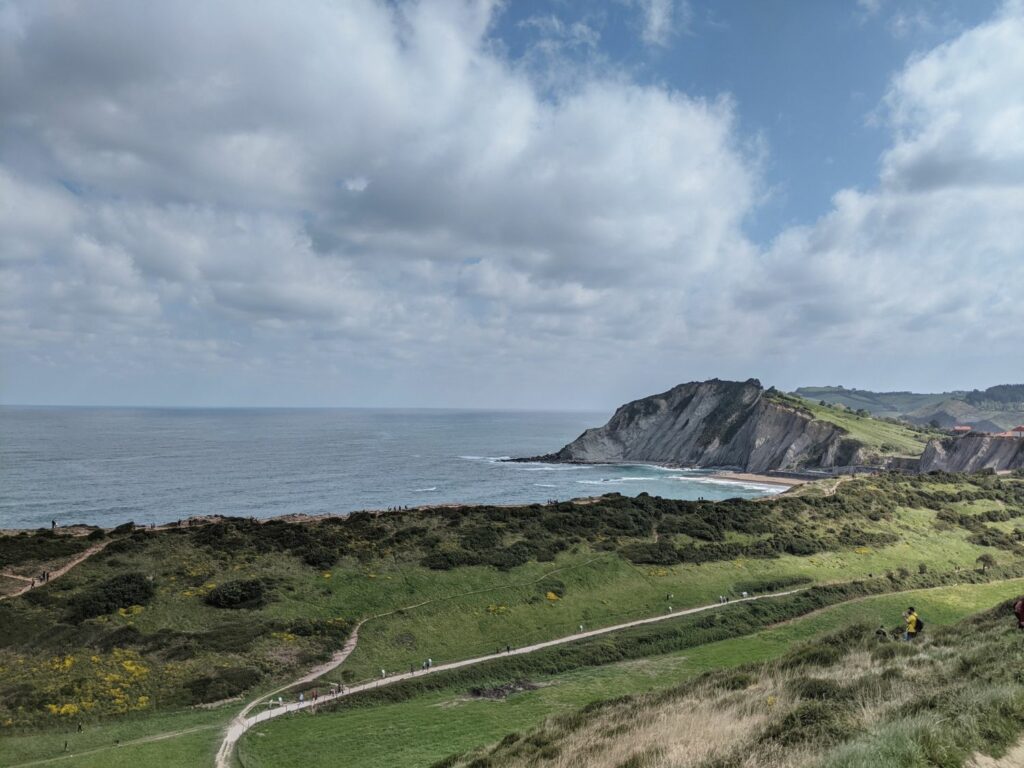
Another good way to take in the full beauty of the flysch is to hike a little around the coastline.
I’d personally recommend the“Way of St James” track amongst all the short hikes around the flysch (the route in red on the map below).
Following this route, you’ll cover most of the spots above and have a different perspective of the flysch from higher up.
Guided Tours
Last but not least, another way to explore the flysch is to take a guided tour. Guided tours offer in-depth insights into the geological significance of the area.
There are different types of tours available, from Game of Throne tours to trips from San Sebastian which include more stops on the way.
Boat tours are also popular, offering a different perspective of the rock formations.
You can check out all the options and availability here.
FAQs about Zumaia Flysch
Below we’ve answered some of the most common FAQs we’ve received about the flysch in Zumaia.
The Flysch of Zumaia is a remarkable geological formation found along the coast of Zumaia in northern Spain.
It is famous for its distinct layers of sedimentary rock that have accumulated over millions of years. These layers contain a treasure trove of geological information, essentially serving as a time capsule of Earth’s past.
The Zumaia Flysch’s age is estimated to be around 50 million years old, tracing its origins back to the Eocene epoch.
During this period, the area that is now Zumaia was submerged under the sea, and the sediments gradually accumulated, layer by layer, forming the remarkable geological structure we see today.
The Zumaia Flysch measures around 8 kilometres (about 5 miles) in total along the coastline of Zumaia towards Deba.
